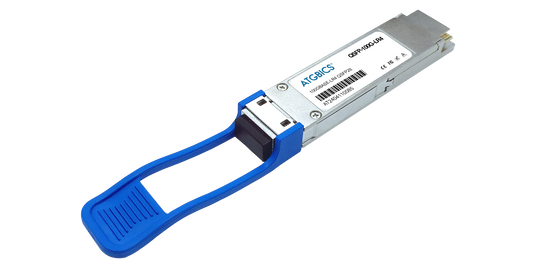Both 100G LR and LR4 transceivers are designed for long distance data transmission up to 10km. The ‘LR’ stands for ‘Long Reach’ indicating this range capability. They are commonly used in data centre interconnects, backbone networks and metropolitan telecommunications infrastructure.
100G LR4 transceivers use four distinct wavelengths to carry data at a rate of 25Gbps each, totalling 100Gbps transmission speeds. Wavelength Division Multiplexing (WDM) technology is used to combine (multiplex) these four signals onto a single fibre which are then separated (demultiplexed) again at the receiving end.
Similarities
Both the 100G LR and LR4 support a maximum transmission distance of 10km over single-mode fibre (SMF) typically using duplex LC connectors. They adhere to IEEE standards which ensures interoperability regardless of vendor.
Differences
100G LR transceivers are less complex devices as they operate using a single wavelength of 1310nm. In contrast, LR4 modules use four different wavelengths running at 25Gbps combined through WDM. This design requires more complex optical components within the transceiver.
NRZ (Non-Return-to-Zero) modulation is used by LR4 modules, whereas LR utilises PAM4 (Pulse Amplitude Modulation 4 level) allowing it to reach higher speeds on a single wavelength. See our other Knowledge Base article to find out more about these modulation types.
History of the Technology
In 2010, the IEEE released their first 100G optical standard 802.3ba which included 100G LR4 technology and roughly coincided with the development of the CFP pluggable form factor. As part of the earliest 100G standards, LR4 technology has become widely adopted and remains a key solution for long range data transmission.
To help reduce costs and increase transmission rates, a new specification called 100G single lambda was introduced. Based on PAM4 modulation, this technology transmits data at 100Gbps over a single wavelength. Single lambda 100G optics, like 100G LR, simplify the transition to 400G, making them more useful in infrastructure designed to accommodate future upgrades.











